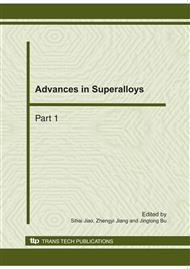p.417
p.424
p.429
p.433
p.437
p.441
p.445
p.454
p.460
Notch Fatigue Properties of TRIP-Aided Annealed Martensitic Steels
Abstract:
Fatigue properties of TRIP-aided annealed martensitic steels with chemical composition of 0.2%C, 1.5%Si, 1.5%Mn, 0-1.0%Cr, 0-0.2%Mo, 0-0.05%Nb, 0-18ppmB was examined for application of automotive diesel engine common rail. The steels achieved extremely higher notch fatigue limits and lower notch-sensitivity than the conventional structural steels, especially in steel with boron or without chromium and molybdenum. This was associated with (i) the TRIP effect of a large amount of stable retained austenite and (ii) strain-induced transformed hard martensite which suppressed the crack initiation and growth due to plastic relaxation.
Info:
Periodical:
Pages:
437-440
Citation:
Online since:
October 2010
Authors:
Price:
Сopyright:
© 2011 Trans Tech Publications Ltd. All Rights Reserved
Share:
Citation:


